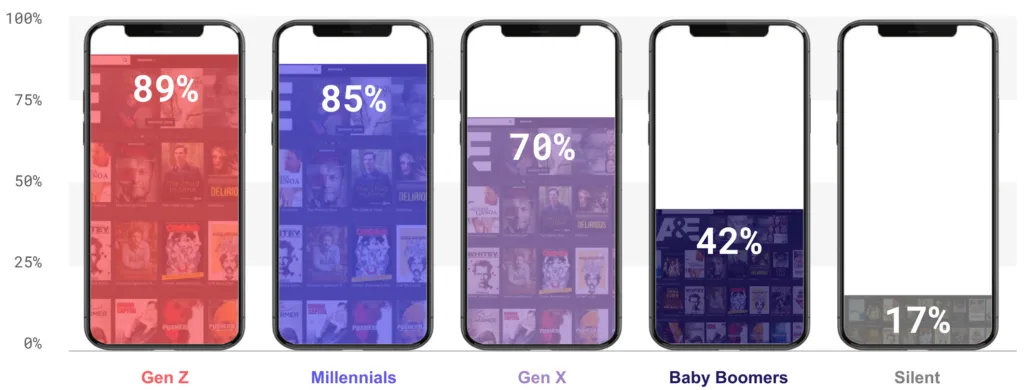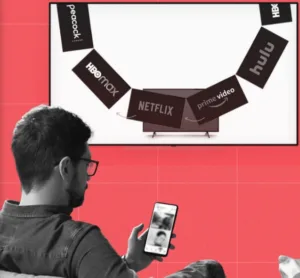The people who make TVs are, for the most part, boomers. The people who watch TV are not. Yet, it is the boomers who represent the majority of people who want non-boomers buying TVs. However, data suggests, the emerging demographics of younger generations don’t want anything to do with past generations’ ideas of what TV watching is or should be. Overwhelmingly, new generations of TV watchers are growing up with a mobile first mindset.

This doesn’t really signal the end of big screens or the home cinema experience (video didn’t kills the radio star). Short form video is by far the largest and most accessible video format for younger generations who get their viewing done on Tik Tok, YouTube, and other social media apps. If you ever want to lose a night, without blacking out in a drunken haze, try scrolling through Tik Tok’s videos. It’s amazing how they can suck you into their whirlpools of narcissism.
What the data does show, however, is that priorities change for buyers, and over time, habits become ingrained, the kind of habits that have you thinking, do I really need a new TV or just a better phone. But there’s more to it than just the change in viewing tastes. Maybe the pandemic had something to do it, and maybe it was inevitable, but social watching is an established cultural touchstone for many younger audiences. Instead of sitting with the family to watch something that everyone can agree on – something that everyone can agree on doesn’t exist, by the way – generations are growing up picking and choosing exactly what they want, and sharing the experience with the people that really matter: their friends and peers who appear to them mostly on their mobile devices. Maybe that’s why there’s something like VIZIOgram.
Gamers are notoriously good at social watching experiences being both players of massive multiplayer online games, and also watchers of other people playing those same games as they crowd around a chat window with their friends. The social context of TV viewing has moved from a fixed location, like the living room, to a virtual one where shared viewing is the norm.
We are in the middle of an economic downturn in the display industry, like for many other industries, and demand is going to be down for a while. The question remains, will it come back and if so, why? You can probably say, manufacturers had been overstocking channels thinking the good times will never end, that we are seeing a readjustment in the markets, an arc that bends towards normality, after the heady days of the pandemic. Sure, we all bought a lot of crap while we were trapped at home thinking that we should hunker down and enjoy it while we could. Habits changed. There’s a popular adage that says if you stick to something, like a diet or exercise plan, for 8 weeks it can become a habit. Great for your health, but not so great for vendors waiting for you to buy something that you have grown out of.

